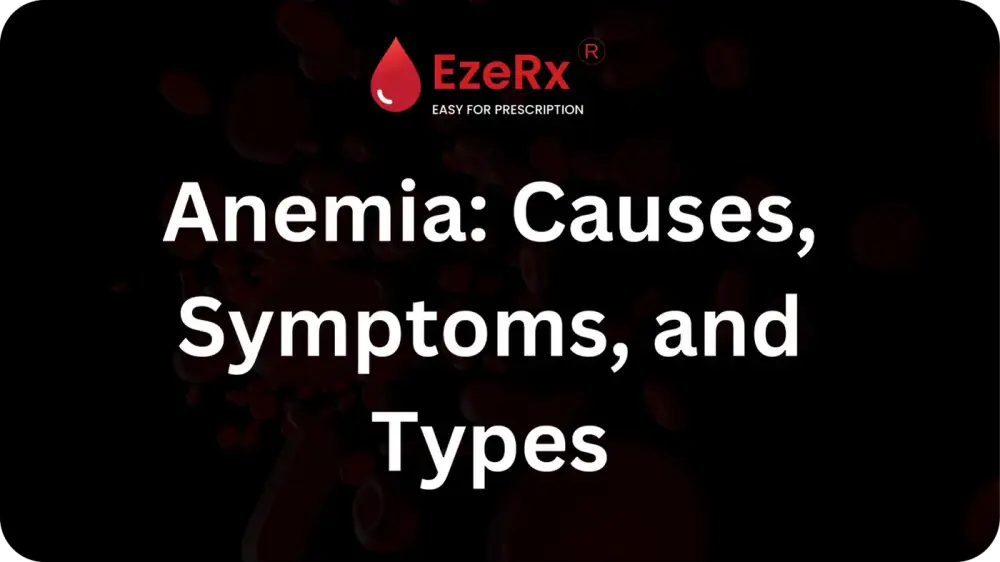
Understanding Anaemia: Causes, Symptoms, and Types
Anaemia is a common blood disorder that affects millions of people worldwide. It is characterised by a deficiency in the number of red blood cells or a lower-than-normal quantity of haemoglobin in the blood. This condition can lead to various health issues and, if left untreated, can become a serious medical concern. In this comprehensive guide, we will delve into the meaning of anaemia, its causes, symptoms, and various types, including a focus on a specific type known as sickle cell anaemia.
Anaemia, in simple terms, can be defined as a condition in which the body lacks a sufficient number of healthy red blood cells or haemoglobin, the protein responsible for carrying oxygen to the body's tissues. Haemoglobin gives blood its red colour and plays a crucial role in oxygen transport. When there is anaemia, the body does not receive an adequate oxygen supply, leading to various health problems.
Anaemia can be caused by a variety of factors, but they all ultimately result in one of the following issues:
1. Decreased Production of Red Blood Cells: In some cases, the body may not produce enough red blood cells due to nutritional deficiencies, bone marrow disorders, or chronic diseases.
2. Increased Destruction of Red Blood Cells: Conditions that lead to the rapid breakdown of red blood cells, such as autoimmune disorders or infections, can cause anaemia.
3. Blood Loss: Excessive bleeding, either from injuries or chronic conditions like ulcers or heavy menstrual periods, can result in anaemia due to the loss of red blood cells.
The symptoms of anaemia can vary depending on its severity and the underlying cause. However, some common symptoms include:
- Fatigue and weakness
- Pale or yellowish skin
- Cold hands and feet
- Shortness of breath
- Irregular heartbeat
- Dizziness or lightheadedness
- Cold hands and feet
- Headache
Sickle cell anaemia is a specific type of anaemia caused by a genetic mutation that affects the structure of haemoglobin. In normal red blood cells, haemoglobin is flexible and round, allowing them to move smoothly through blood vessels. However, in individuals with sickle cell anaemia, the haemoglobin forms an abnormal, rigid, and crescent or "sickle" shape. These misshapen red blood cells can block blood flow, leading to severe pain, organ damage, and other complications.
Sickle cell anaemia has its unique set of symptoms, which may include:
- Severe pain episodes (sickle cell crises)
- Swelling of hands and feet
- Frequent infections
- Delayed growth in children
- Vision problems
- Anaemia symptoms (fatigue, pale skin, etc.)
Iron deficiency anaemia is the most common type of anaemia worldwide and occurs when the body lacks sufficient iron to produce haemoglobin. Iron is a crucial component of haemoglobin, and without enough iron, the body cannot make an adequate number of red blood cells. This type of anaemia is often caused by factors such as poor diet, blood loss, or difficulty absorbing iron from food.
Preventing anaemia involves addressing its underlying causes. For iron deficiency anaemia, a balanced diet rich in iron-containing foods like lean meats, beans, and leafy greens can help. Additionally, iron supplements may be prescribed in severe cases.
Sickle cell anaemia is a genetic disorder, and while there is no cure, various treatments can help manage its symptoms and complications. These may include medications, blood transfusions, and stem cell transplants.
In cases where anaemia results from chronic diseases or underlying health conditions, addressing the root cause and seeking medical advice is crucial.
Anaemia is a prevalent blood disorder with various causes and types, including the unique case of sickle cell anaemia and iron deficiency anaemia. Understanding the symptoms and seeking timely medical intervention is essential for effectively managing and treating this condition. If you or someone you know is experiencing symptoms of anaemia, consult a healthcare professional for a proper diagnosis and treatment plan. By addressing anaemia early, you can significantly improve your quality of life and overall health.